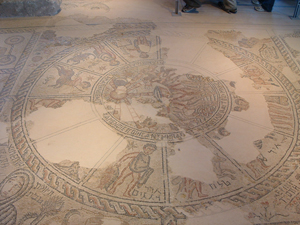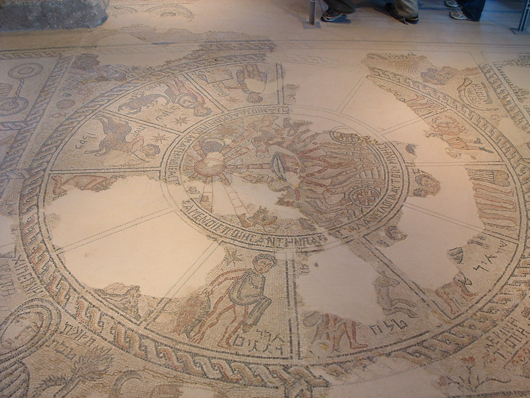
SAN ANTONIO (AP) – Amid the rocky Israeli hills overlooking the Sea of Galilee, a Trinity University professor and a student have helped researchers excavate an ancient Jewish village and a monumental synagogue possibly dating back 1,700 years.
About two weeks ago, the crew unexpectedly uncovered portions of a colorful mosaic floor on one of the synagogue’s aisles, said Chad Spigel, assistant professor of religion at Trinity.
One portion of the mosaic depicts a biblical scene: Samson exacting fiery revenge against the Philistines for giving away his wife. The other showcases what appear to be two female faces with an inscription that is likely in ancient Aramaic, Spigel said.
While the project primarily seeks to date the synagogue and teach students how to excavate, the discoveries associated with the dig might help scholars better understand how Judaism developed in antiquity, Spigel said.
“Judaism shifted from temple worship—meaning you offered sacrifices—to synagogue worship at some point,” Spigel said. “The question is: When?”
Some researchers now believe that shift was more gradual than previously thought, he said.
The excavation of the ancient village of Huqoq, led by experts from the University of North Carolina at Chapel Hill and the Israel Antiquities Authority, just wrapped up its second season but is expected to continue each summer for the next five years.
When the researchers excavate below the mosaic floor, they hope to find coins, which might contain dates or faces of historical leaders, and pottery pieces, which can be dated depending on their style, Spigel said.
Dating this site, possibly from the late Roman period, could be helpful in determining a time frame for similar mosaics and synagogues elsewhere, he said.
Spigel said that based on the size of the stones in the foundation and walls of one corner of the synagogue, he believes that the structure might have seated between 200 and 400 people. The mosaic inside was made from colored stone cut into squares or triangles.
“Our mosaics are also important because of their high artistic quality and the tiny size of the mosaic cubes,” said project leader Jodi Magness of the University of North Carolina at Chapel Hill in a news release. “This, together with the monumental size of the stones used to construct the synagogue’s walls, suggest a high level of prosperity in this village, as the building clearly was very costly.”
The portion of the mosaic with two women’s faces contains a sentence fragment with a word that could mean either “commandment” or “good deed” and another word that refers to “labors,” Spigel said. The phrase might deal with the rewards for following the commandments, though researchers will compare it with inscriptions at other ancient synagogues and texts from the period to fill in the blanks.
The second image is believed to depict a passage from the Old Testament book of Judges in which Samson ties the tails of foxes together and places a torch between them to light the Philistines’ crop fields on fire, an act of revenge after his wife was given away to his companion.
“There’s another synagogue a few miles away that also has a scene from the Samson stories. So this is the second example we have of a mosaic with a Samson story from the general time period,” said Spigel, adding that they are now looking into this discovery’s significance.
___
Information from: San Antonio Express-News, http://www.mysanantonio.com
Copyright 2012 Associated Press. All rights reserved. This material may not be published, broadcast, rewritten, or redistributed.
AP-WF-07-09-12 1758GMT
ADDITIONAL IMAGE OF NOTE



